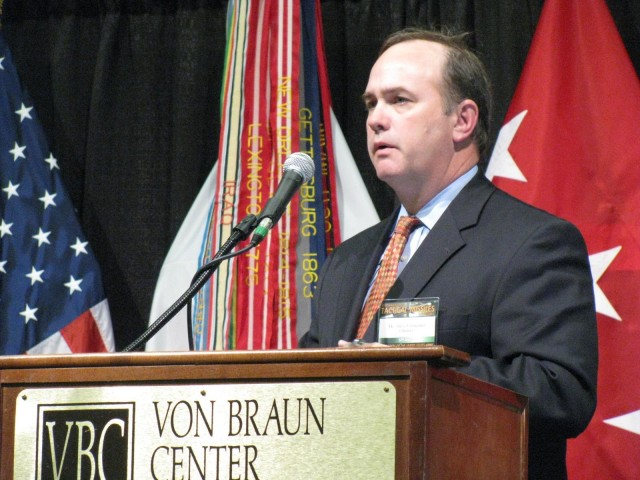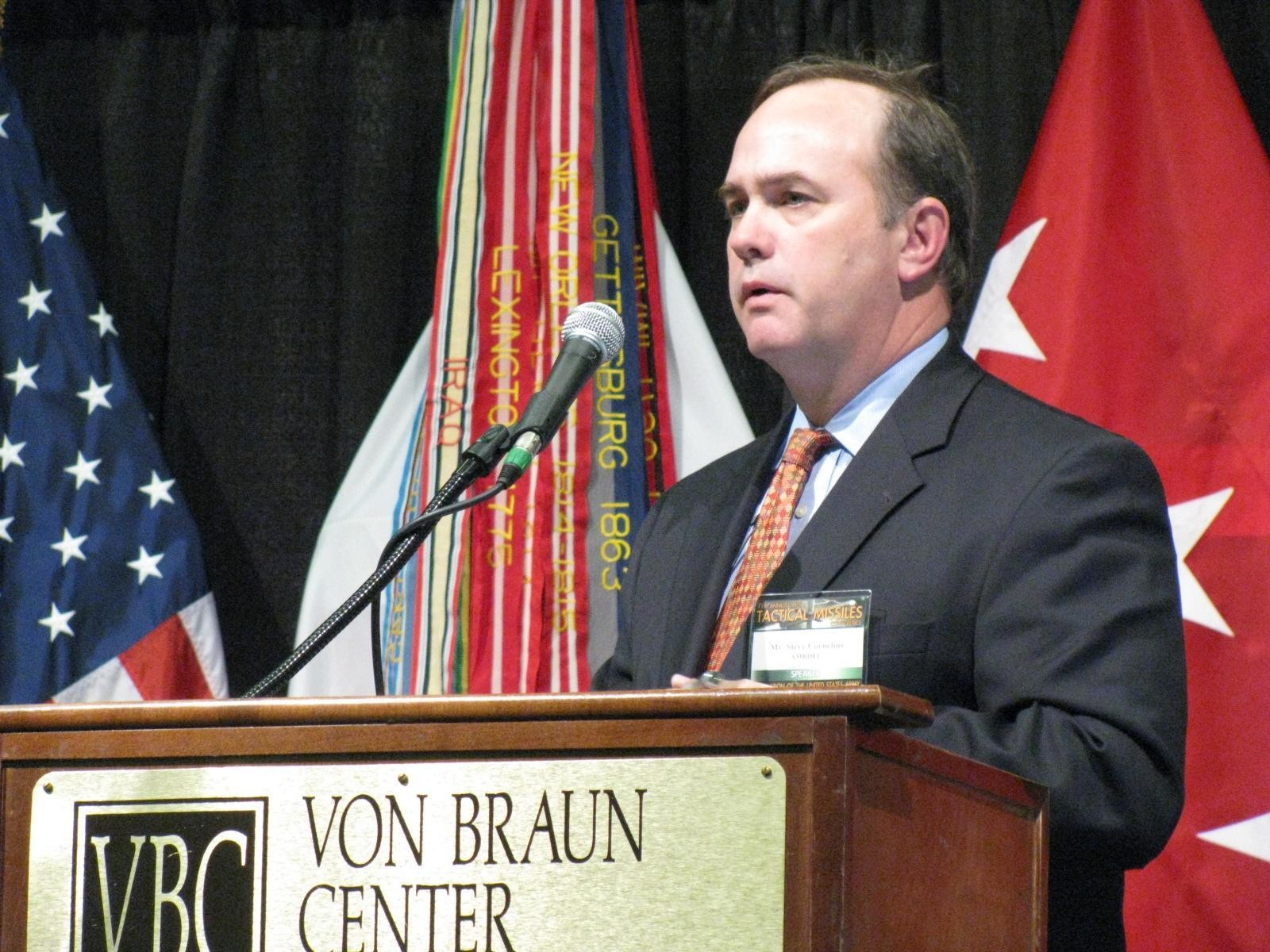From the point of view of the engineers at the Aviation and Missile Research Development and Engineering Center, the synergy between government and industry is vital to the development of new technologies that can make a difference on the battlefield.
"This community is a synergy between government and industry - all play a critical role in making sure we get the right missile technology in the field and that the missile technology does what it's intended to do," said C. Stephen Cornelius, AMRDEC associate director for missile development.
"The missile community here has operated for many years. It's a very strong team."
Cornelius made his comments at the AUSA Tactical Missiles Conference at the Von Braun Center on May 19.
The government/industry missile team works to ensure program managers get the support and technology to make weapon systems successful. Today's army of weapons is so successful for the war fighter that very few research and development funds are focused on new weapons to add to the arsenal.
"Science and technology is focusing on upgrades and making more effective the weapons we have today," Cornelius said. "We are looking for opportunities with our current systems to look at different ways to provide new capabilities to the war fighter."
In the '70s, huge investments were made in new weapon systems. Today, those investments are paying off with highly developed systems that are effective and adaptable.
With today's need to protect Soldier units, bases and installations, significant science and technology investments are being made in systems that provide point protection, area protection and air defense, Cornelius said.
"We are trying to balance activities between protection and strike," he said. "A lot of pervasive technology goes across all systems and provides unified technology between protection and strike."
The overseas contingency operations in Iraq and Afghanistan have had a significant impact on the type of weapons developed, their capabilities and the speed of development.
"Current conflicts have pushed survivability and multi-purpose lethality needs to the forefront," Cornelius said. "We are spending a lot of money to make missile systems smaller, lighter, cheaper and safer to carry."
Engineers are also looking into future missile system requirements.
"What are the concepts and technologies we need to bring online to counter a very hard and difficult enemy'" he said. "Part of the challenge we have here is: What should our new acquisition requirements be' We're looking at missile concepts, gun concepts, directed energy concepts, and mortars, artillery and rockets ... We're looking at air defense from 3 feet off the ground."
New developments like the Kinetic Energy Protection System will provide additional protection on the battlefield while proven systems like the Guided MLRS need new capabilities to address the threat on the ground, he said.
With all missile systems, three things remain most important: making them with smaller, lighter and cheaper components; having them compatible so they can be part of a close network of weapons and systems; and maximizing the Soldier's lethality, survivability and situational awareness, Cornelius said.
"We are constantly looking at upgrades and enhancements," he said. "Keep in mind, the threat is always changing and we have to be able to respond to that threat. We have to bring new capabilities to the war fighter. We have to have technology ready at the right time to give to the acquisition community and the Soldier."


Social Sharing